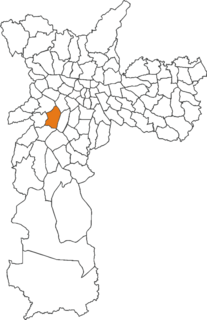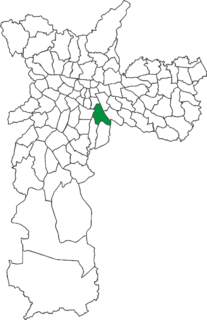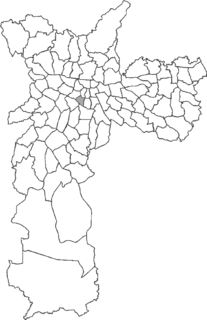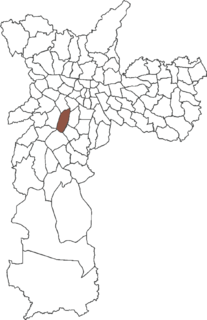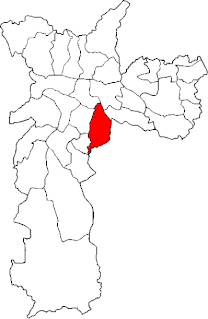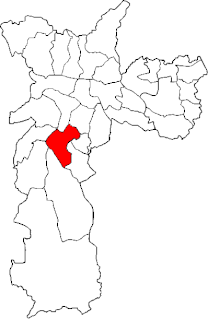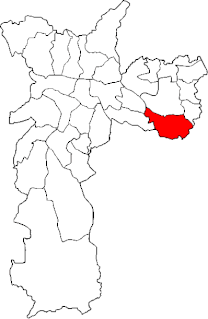| Subprefecture of Itaim Paulista | |
|---|---|
| Subprefecture | |
 Location of the Subprefecture of Itaim Paulista in São Paulo | |
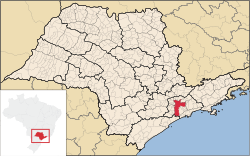 Location of municipality of São Paulo within the State of São Paulo | |
| Country | |
| Region | Southeast |
| State | |
| Municipality | |
| Administrative Zone | East 2 |
| Districts | Itaim Paulista, Vila Curuçá |
| Government | |
| • Type | Subprefecture |
| • Subprefect | Irene Mitsue Inada |
| Area | |
| • Total | 21.72 km2 (8.39 sq mi) |
| Population (2008) | |
| • Total | 399,140 |
| Website | Subprefeitura Itaim Paulista (Portuguese) |
The Subprefecture of Itaim Paulista is one of 32 subprefectures of the city of São Paulo, Brazil. It comprises two districts: Itaim Paulista and Vila Curuçá. [1]
A subprefecture is an administrative division of a country that is below prefecture or province.
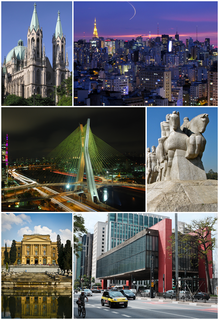
São Paulo is a municipality in the Southeast Region of Brazil. The metropolis is an alpha global city and the most populous city in Brazil, the Western Hemisphere and the Southern Hemisphere, besides being the largest Portuguese-speaking city in the world. The municipality is also the Earth's 11th largest city proper by population. The city is the capital of the surrounding state of São Paulo, the most populous and wealthiest state in Brazil. It exerts strong international influences in commerce, finance, arts and entertainment. The name of the city honors the Apostle, Saint Paul of Tarsus. The city's metropolitan area, the Greater São Paulo, ranks as the most populous in Brazil and the 12th most populous on Earth. The process of conurbation between the metropolitan areas located around the Greater São Paulo created the São Paulo Macrometropolis, a megalopolis with more than 30 million inhabitants, one of the most populous urban agglomerations in the world.

Brazil, officially the Federative Republic of Brazil, is the largest country in both South America and Latin America. At 8.5 million square kilometers and with over 208 million people, Brazil is the world's fifth-largest country by area and the fifth most populous. Brazil borders every South American country except Chile and Ecuador. Its capital is Brasília, and its most populated city is São Paulo. The federation is composed of the union of the 26 states, the Federal District, and the 5,570 municipalities. It is the largest country to have Portuguese as an official language and the only one in the Americas; it is also one of the most multicultural and ethnically diverse nations, due to over a century of mass immigration from around the world.
It's the easternmost subprefecture. Its population consists largely of migrants from the north-east of Brazil, in particular from the states of Bahia and Pernambuco. Earlier immigrants came from Italy, Japan and Hungary. [2]

Bahia is one of the 26 states of Brazil and is located in the northeastern part of the country on the Atlantic coast. It is the 4th-largest Brazilian state by population and the 5th-largest by area. Bahia's capital is the city of Salvador, located on a spit of land separating the Bay of All Saints from the Atlantic. Once a monarchial stronghold dominated by agricultural, slaving, and ranching interests, Bahia is now a major manufacturing center whose last three elections have been dominated by the Workers' Party.

Pernambuco is a state of Brazil, located in the Northeast region of the country. The state of Pernambuco also includes the archipelago Fernando de Noronha. With an estimated population of 9.2 million people in 2013, it is the seventh most populous state of Brazil, and is the sixth most densely populated and the 19th most extensive among the states and territories of the country. Its capital and largest city, Recife, is one of the most important economic and urban hubs in the country. As of 2013 estimates, Recife's metropolitan area is the fifth most populous in the country, and the largest urban agglomeration in Northeast Brazil.
